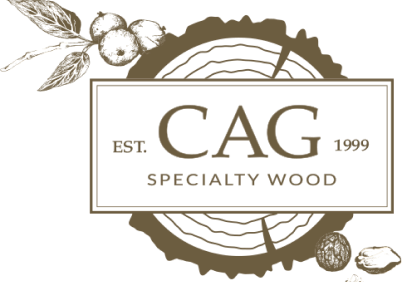

Canarywood 4/4 and 8/4
Canarywood (Centrolobium paraense) can be almost rainbow colored—with dark red streaks, along with the natural orange, yellow, and brown coloration. Almost every locality where this tree grows has one or more distinctive common names for it without regard to the species. Some of the most popular are Arariba, Porcupinewood, and Putumuju. Canarywood is said to have good acoustic properties, and is sometimes used for speaker enclosures and entertainment system cabinets.
The sapwood, which is clearly demarcated from the heartwood, is pale yellowish. The heartwood is a vivid yellow or orange, usually variegated and sometimes rainbow-hued. As it ages, it typically darkens to red or brown. The texture and luster varies as does the grain, varying from straight to irregular. With its beautiful grain and stability, Canarywood is used largely for fine furniture and cabinetry. It is also used for boat parts such as keel, planking and trim plus many other uses such as heavy construction timbers, flooring as well as being sliced for veneers.
Easy to work with hand & power tools & can be planed to a very smooth finish. Nailed, screwed & glued joints hold perfectly & it can be stained, polished or painted & holds hard enamels.
|
Botanical Name |
Centrolobium paraense |
| Origin | South America |
| Janka Hardness | 1,520 lbf |
| Average Dried Weight | 52 lbs/ft3 |
| Workability | Easy to work with both hand and machine tools. Tearout can occur during planing on pieces with irregular grain. Good dimensional stability. Turns, glues and finishes well. |
| Related Species | None |
Canarywood 4/4 and 8/4
4/4
4050 Old Cornelia Hwy
Gainesville GA 30507
United States
Wood Calculator Section
Need Help Figuring out how much you need ?
One Board foot = 144 Cubic Inches
Example: If you need a piece of wood 12 inches wide, 1 inch thick and 24 inches long, that is equal to 2 board feet.
12 inches x 1 inch x 24 inches = 288 inches. 288/ 144 = 2 board feet

